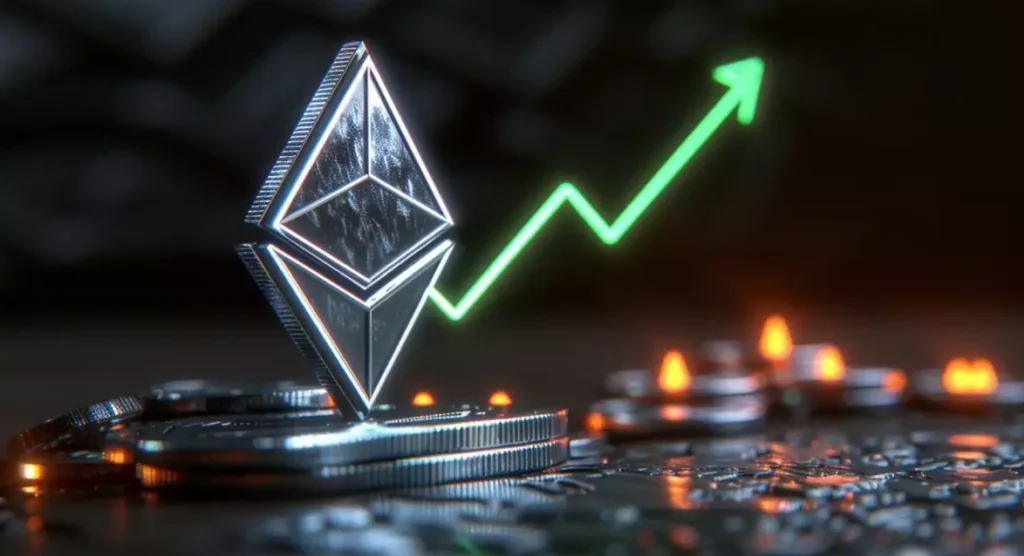The second-largest cryptocurrency by market capitalization, Ethereum Price Breaks 25k (ETH), has lately shown indications of a strong comeback and passed the $2,500 barrier. This milestone is a turning point for Ethereum, signaling a fresh surge of investor confidence among a larger crypto market recovery. Traders and long-term holders are intently observing for the following significant action as purchasing demand rises. Providing the most complete Ethereum price projection accessible online today, this paper explores Ethereum’s present price dynamics, technical prognosis, fundamental causes, and macroeconomic context.
The Value of the $2,500 Level in the Ethereum Price Chart
Not only is the $2,500 mark a psychological milestone, but it also serves as a crucial resistance-turned-support zone in Ethereum’s past price path. Early 2024 saw Ethereum last trade regularly above $2,500 before a more general market correction sent it down. Rising trading volumes and more on-chain activity support the recent regaining of this level by pointing to actual demand rather than speculative frenzy.
Technically, Ethereum’s violation of this threshold points to a possible trend reversal. Positive indications abound from indicators such as Moving Average Convergence Divergence (MACD) and the Relative Strength Index (RSI). Usually considered a long-term bullish indication in cryptocurrency markets, the 50-day moving average is also approaching a golden cross with the 200-day moving average.
Ethereum Metrics Signal Bullish Momentum
Ethereum’s on-chain statistics make a strong case for ongoing positive momentum. Glassnode and Santiment’s stats show a notable rise in ETH transactions and active addresses. ETH’s net flow on exchanges has become negative, implying that more ETH is being taken out to staking contracts or private wallets, historically a predictor of price increase.
Ethereum staking has also clearly surged. As of May 2025, over 33 million ETH had been staked on the Beacon Chain, indicating investor belief in Ethereum’s long-term value proposition. By reducing the liquid supply of ETH, this higher dedication to staking naturally generates increasing pressure on prices via scarcity economics.
Macroeconomic Considerations and the More General Crypto Scene
The comeback of ETH above $2,500 is not happening in a vacuum. General macroeconomic dynamics bring about more favorable conditions for risk-on assets like cryptocurrencies. The signal of a stop in interest rate increases by the U.S. Federal Reserve has given world markets fresh hope. Once again investigating digital assets, especially those with great use and developer ecosystems like Ethereum, institutional investors are seeing indications of declining inflation.
A consistent flow of money has also come from the approval and rising acceptance of Ethereum-based exchange-traded funds (ETFs) in numerous countries, most notably Europe and the Asia-Pacific. One important reason the present market cycle differs from past bull runs, driven mainly by retail, is this institutional involvement.
Ecosystem Developmental Milestones for Ethereum

Ethereum’s value proposition goes beyond its price behaviour. With hundreds of distributed apps (dApps) running on its infrastructure, the network leads in decentralized finance (DeFi) and non-fungible tokens (NFTs). Dominant players still are platforms like Uniswap, Aave, and OpenSea, which all depend on Ethereum’s innovative contract features.
The ongoing development of the Ethereum 2.0 roadmap—especially the use of proto-danksharding (EIP-4844—is one of the most essential accelerators for Ethereum in 2025. By using data blobs that increase Layer 2 transaction efficiency, this improvement seeks to lower gas costs and increase scalability. The introduction of EIP-4844 has already attracted fresh developer enthusiasm, which improves Ethereum’s long-term value story.
Trends in Institutional Adoption and Investor Sensibility
Data from The Block and CoinShares shows that investor attitudes toward Ethereum have become increasingly positive. Topping $150 million, weekly ETH inflows into institutional products are the largest since November 2021. Institutional interest has been heightened by BlackRock’s latest comments on Ethereum being a “technological backbone for the future of finance.”
Top startup finance companies like Andreessen Horowitz (a16z) and Paradigm also support Ethereum-native initiatives, highlighting their faith in the network’s lifespan. As regulatory clarity rises in big markets, including the U.S., the U.K., and Singapore, institutions will probably be more exposed to Ethereum as a store of value and a utility token.
Obstacles to Ethereum’s ongoing price increase
Even with the optimistic view, one should be aware of any hazards—faster and cheaper Layer 1 blockchains like Solana and Avalanche challenge Ethereum. Furthermore, Ethereum’s high transaction fees are a hurdle to widespread adoption in some use cases, even with Layer 2 scaling solutions like Arbitrum and Optimism.
Regulatory scrutiny could affect short- to medium-term price stability, particularly regarding ETH’s status as a security or commodity. The U.S. Securities and Exchange Commission (SEC) has treated Ethereum ambiguously, which leaves the possibility of regulatory shock that would affect institutional involvement.
Ethereum Price Forecast: ETH’s Future
Ethereum’s short-term price picture is still positive, considering the present momentum and macroeconomic tailwinds. Should buying pressure continue, analysts from Standard Chartered and CryptoQuant project ETH between $2,800 and $3,000 within Q2 2025. Historical chart patterns and a rising Ethereum-to-Bitcoin ( ETH/BTC) ratio help validate this estimate.
Longer-term forecasts even seem more promising. Should Ethereum effectively apply future improvements like full sharding and keep its dominating position in Web3 infrastructure, some projections indicate ETH might reach $5,000 to $7,000 by 2026. These forecasts are predicated on Ethereum’s ongoing attraction for institutional capital and developer mindshare, which are vital for its relevance.
Finally
Rising above the $2,500 mark is more than just a technical breakthrough; it marks a confluence of optimistic fundamentals, increasing institutional adoption, and ecosystem development. Ethereum is still a pillar of value in the crypto market, thanks mainly to its pivotal position in the blockchain ecosystem and robust development schedule. ETH might be preparing for its next significant bull run as the buying pressure mounts and investor mood changes. Monitoring Ethereum’s development on-chain and in the larger financial scene will help investors and aficionados.


